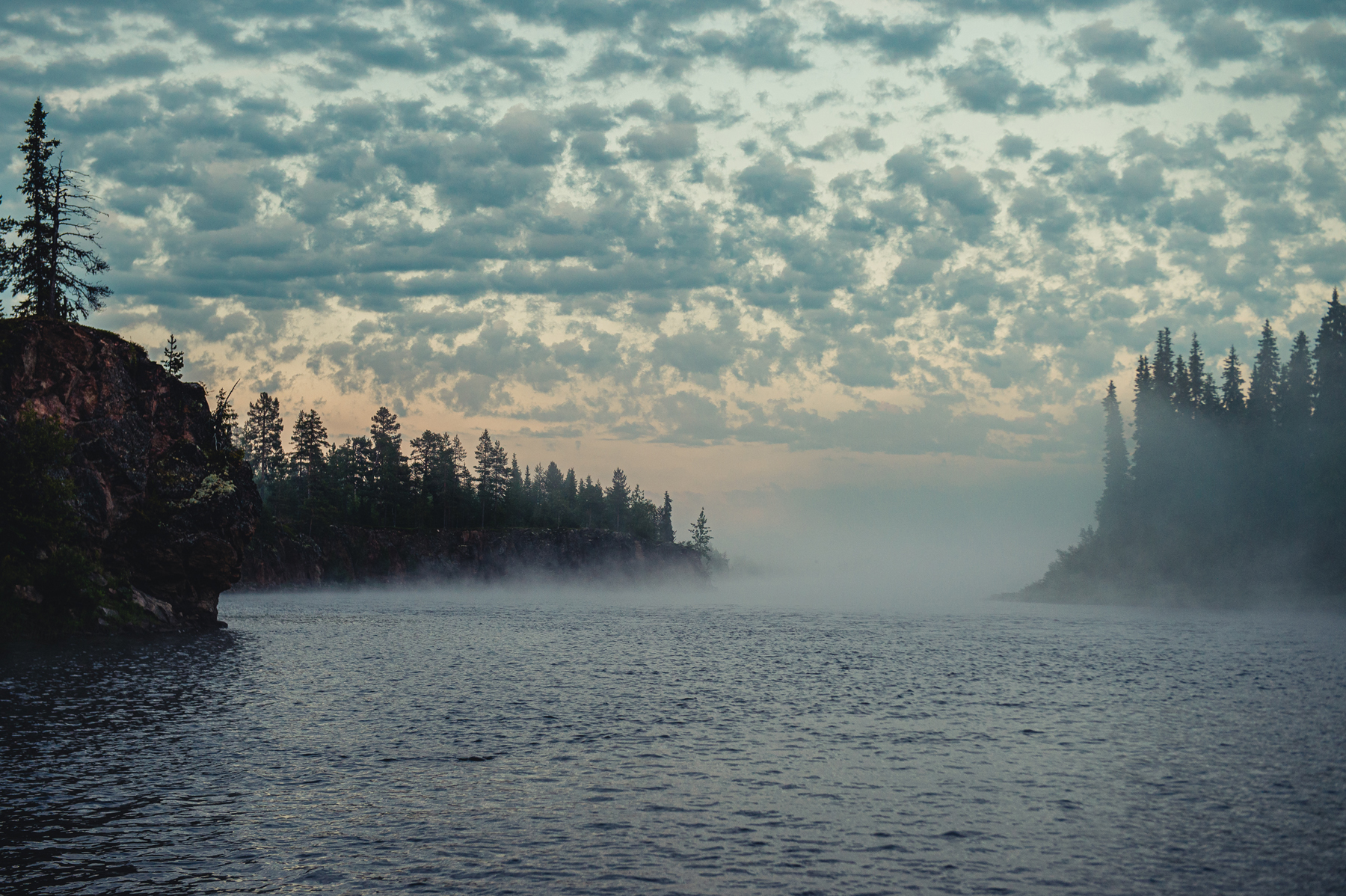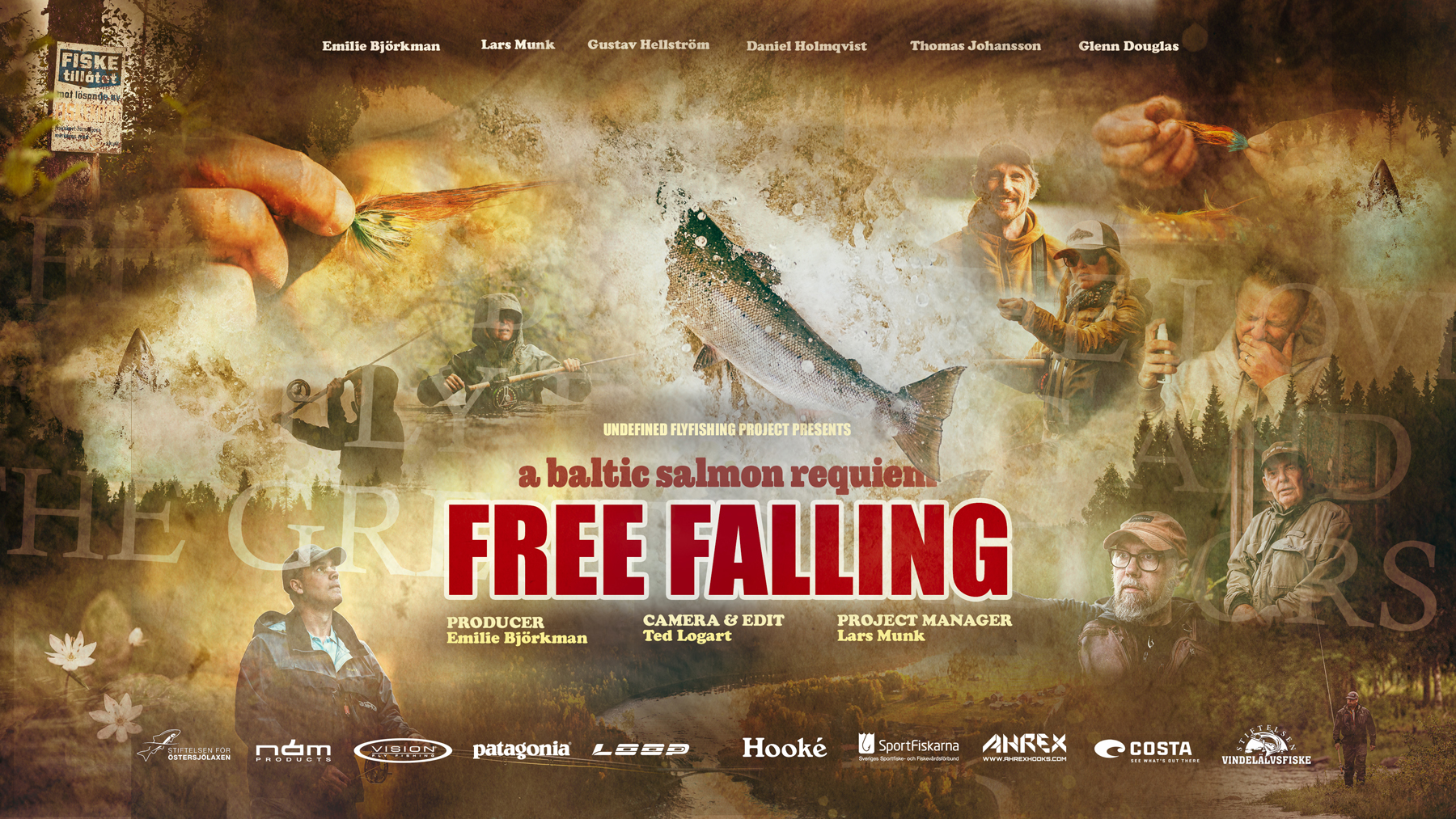
6 minute read
A FIGHT AGAINST TIME: Saving the Baltic Salmon
The Baltic salmon is facing one of its biggest challenges yet—a dramatic decline in wild populations due to poor fisheries management, industrial fishing, and environmental threats. In response to this crisis, Free Falling was created as a follow-up to Home Rivers Recycled, aiming to raise awareness and inspire action. In this interview with Lars Munk Lauritsen – from UndefinedFlyFishingProject.com, we discuss the background of the film, the lessons learned, and the urgent steps needed to protect this iconic species before it’s too late.
By THE EDITORIAL STAFF

What’s the background for the film you’ve just released?
Approximately three years ago, Emilie and Ted decided to create Home Rivers Recycled, a film that explores Emilie’s love for fly fishing, her role as a mother, and her riverside life— marked by little sleep, embracing what nature offers, and the dream of catching a big Baltic salmon. The film also highlights the success story of Baltic salmon, showcasing what can be achieved through proper management of wild salmon populations. It illustrates improvements in Swedish river fishing between 2013 and 2021 and emphasizes how having a river to call home becomes a vital part of one’s life and lifestyle.
The film was originally set to have a follow-up in 25 years, but due to a significant decline in wild Baltic salmon stocks in 2023 (and 2024), we decided to fast-track the sequel, Free Falling, to raise awareness about this urgent issue.

What was the most important lesson learned during the film project?
That’s a tough question, but personally, I learned the importance of maintaining a hopeful mindset. After about three weeks of fishing in 2023, I experienced a minor depression over the salmon’s future, which diminished the joy of fishing for me.
I felt deeply saddened by the uncertainty surrounding salmon populations, the indifference of politicians, and the potential impact on future generations’ experiences.
Through reflection and discussions with Ted, Emilie, and fellow fishers, I realized that my focus had been too narrow—centered on catching fish rather than understanding the bigger picture. As I head into the 2024 season, I’ve adopted a more open mindset, choosing to enjoy my time by the river while raising awareness about these pressing issues.

How have you been affected by the decline in salmon runs in Sweden (and beyond)?
The decline of both Baltic and Atlantic salmon has negatively impacted lodges, camps, entire river valleys, and the local economy—including stores, gas stations, and other businesses—due to fewer fishermen visiting. This has led to reduced revenues and a general decline in well-being among salmon fishers, conservationists, and communities along the rivers.
Politicians need to recognize the wider economic implications—not just local revenue losses but also the broader ecosystem, which includes the tackle industry, travel companies, restaurants, and accommodations.

What are your main concerns for Baltic salmon?
My primary concern is that decision-makers will continue to overlook these urgent issues, potentially leading to the disappearance of Baltic salmon. However, I refuse to believe this will be the outcome. I genuinely believe there is still time to positively influence the future of both the salmon and the Baltic Sea.
Right now, many things are going in the wrong direction, but I also sense a counter-reaction. Hopefully, this marks the beginning of a new and necessary shift in awareness and action.

How would you explain the decline of Baltic salmon?
To keep it brief, the main contributing factors are:
• Trawlers catching sprat and herring (along with bycatch) for the farmed salmon and feed industry.
• A short-sighted management system based on smolt production (MSY) instead of focusing on returning adult salmon.
• A lack of a holistic approach to managing the Baltic Sea.
• Pollution in the sea.
• Global warming.
Other factors also play a role, but in my opinion, these are the primary drivers of the decline.

Which factors need to be addressed for Baltic salmon to recover and repopulate the rivers?
One critical issue is the current management approach, which focuses on the number of smolts entering the sea. This method is both problematic and short-sighted. The MSY (Maximum Sustainable Yield) target of 75% smolt capacity does not adequately account for the fishing that occurs in rivers.
While this target may result in more salmon than in previous decades, it does not ensure sustainable populations in both river and sea environments. A lower number of returning adults leads to a higher smolt survival rate, meaning fewer adults are needed to maintain smolt production at 75%. For example, if the Torne River has 45,000 returning spawners, it can potentially produce 2 million smolts, which may seem sufficient. However, the river could sustain 300,000 returning adults, which would significantly benefit river ecosystems and local communities.

Step 1: We need a management approach that prioritizes a minimum number of returning adults to ensure river systems thrive. Sustainable fisheries must consider both river and sea environments, balancing the interests of local fishers and commercial fishing industries. Additionally, the use of wild fish stocks for feed in non-sustainable farming industries must be stopped.

To watch click here: https://youtu.be/M9Ujs1Ykfac
Any key advice for people who want to get involved in protecting and preserving Baltic salmon?
While we don’t claim to have all the answers, as passionate fly fishers with a deep connection to nature, we encourage everyone to take action. Spread awareness—talk to your neighbors, classmates, and co-workers. Share valid information on social media, engage with local politicians, or create content like films and articles. Every effort, no matter how small, contributes to the cause.

Is there any hope?
Absolutely! There is plenty of hope, and we can make a difference. Real change happens when people come together, advocate passionately, and maintain a strong connection with nature. By raising awareness and inspiring action in our communities, we can create a brighter future for Baltic salmon.
Even though the situation is dire, we must remember that Baltic salmon made a remarkable comeback from near extinction in some rivers during the 1990s. Let’s hope history repeats itself— with the right actions and a commitment to responsible, holistic management.
Hope thrives in our collective efforts—so let’s keep talking, keep fishing, and give the salmon the voice it deserves!










